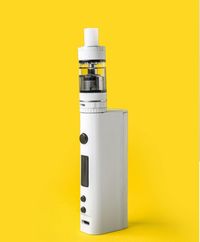The Most Curious Things About Vape Use
Vaping has become a major part of modern culture, sparking debates and raising questions about its usage, effects, and purpose. Whether you're a current user, someone considering vaping, or simply curious, there’s plenty to learn about this popular habit. This blog will address some of the most commonly asked questions about vaping, including how it works, its health effects, and surprising facts tied to its use.

Can You Bring a Vape on a Plane?
Yes, you can bring your vape on a plane, but there are strict rules you need to follow. Airlines typically require passengers to carry their vaping devices and e-liquids in their carry-on luggage, not checked baggage. This is due to safety concerns about lithium-ion batteries, which power vaping devices and pose a fire risk if mishandled or exposed to extreme temperatures in the cargo hold.
There’s more to note:
Usage Restrictions: Vaping is strictly prohibited on planes. Using a vape in-flight can lead to fines or even being banned from the airline.
E-Liquid Size: Ensure liquid containers adhere to the TSA’s 3-1-1 rule (containers must be 3.4 ounces or smaller).
Battery Storage: Remove batteries from your vape and pack them in a battery case to prevent accidental activation.
When traveling internationally, also remember to check the destination country's regulations around vaping. Some countries, like Thailand and India, have banned vaping entirely.

How to Vape
If you’re new to vaping, it might feel a little overwhelming at first. Here are the steps to get started:
Choose the Right Device: There are many types of vapes available, from simple disposable pens to advanced mods.
Beginners often prefer pod systems or disposable vapes for their ease of use.
Select the Right E-Liquid: E-liquids come in various flavors and nicotine strengths. Determine your preferences and start with a lower nicotine strength if you’re
unsure.
Learn How to Use Your Device:
Fill the tank or pod
Make sure the device is charged.
Press and hold the power button (if applicable) while inhaling slowly.
Practice Proper Maintenance:
Clean your device regularly to avoid residue buildup.
Replace coils or pods as needed for optimal performance.

What Is Vaping?
Vaping refers to the act of inhaling vapor created by an electronic device called an e-cigarette or vape. The device heats a liquid (commonly referred to as e-liquid or vape juice), turning it into an aerosol that the user inhales. Unlike traditional cigarettes, vaping doesn’t involve combustion, which means no smoke or ash is produced.
Key components of vapes:
Battery: Powers the device.
Atomizer/Coil: Heats the e-liquid.
E-Liquid: Contains propylene glycol (PG), vegetable glycerin (VG), flavorings, and nicotine (optional).
While vaping is widely marketed as a less harmful alternative to smoking, it still has its controversies, particularly around health risks and addiction potential.
Do Vapes Have Calories?
Yes, but barely. Most e-liquids contain a negligible amount of calories due to the PG, VG, and flavorings used. Even with high usage, the caloric impact of vaping is minimal and unlikely to have any significant effect on your health or weight. However, consuming e-liquids is not recommended; they are designed for inhalation, not ingestion.
How Old Do You Have to Be to Vape?
The legal age to purchase and use vaping products in most countries is tied to the smoking age. For instance:
United States: 21+ (as per the federal Tobacco 21 law)
United Kingdom: 18+
Australia: 18+, with additional restrictions depending on state or territory
Canada: 18+ or 19+, depending on the province
Retailers and e-commerce platforms often require age verification before selling vaping products, helping ensure compliance with legal age requirements.
What’s So Special About Vapes?
Vapes stand out due to their customization, variety, and perceived harm reduction compared to traditional cigarettes. Users can personalize their experience by choosing device types, e-liquid flavors, and nicotine strengths. For many, this personalization creates a more enjoyable experience than traditional smoking. Another significant appeal is the reduced odors and secondhand smoke compared to cigarettes, making vaping more socially acceptable in certain environments.
Additionally, the wide array of flavors—from fruity notes to dessert-inspired blends—adds to the popularity of vaping.
What Is the Scariest Fact About Vaping?
One of the scariest facts about vaping is its appeal to young individuals. The sleek designs, flavorful e-liquids, and aggressive marketing attract a younger demographic, many of whom have never smoked. This can lead to nicotine addiction, often described as a gateway to traditional cigarette use.
According to the CDC, about 14.1% of high school students in the United States reported using e-cigarettes in 2022. The long-term health impacts of vaping are still being studied, leaving public health experts concerned about its prevalence among youth.
What Is the Biggest Effect of Vaping?
The most significant effect of vaping is its impact on respiratory health. While it is generally considered less harmful than smoking, vaping still introduces harmful chemicals into the lungs. Prolonged use can lead to:
Throat and Lung Irritation: Caused by inhaling PG, VG, and flavoring agents.
Nicotine Dependence: For vapes containing nicotine, addiction can develop quickly.
Lung Damage ("Popcorn Lung" and other conditions): Though rare, some users experience severe respiratory damage linked to certain chemical flavorings like diacetyl.
What Is So Addictive About Vaping?
The primary addictive factor in vaping is nicotine. Nicotine alters the brain's chemistry, triggering dopamine release, which creates feelings of pleasure and reward. With frequent use, this leads to dependency.
Furthermore, the design of vaping devices makes consumption effortless. Users may unknowingly consume large amounts of nicotine or vape excessively due to its convenience, exacerbating addiction.
Takeaways on Vaping
Understanding the facts surrounding vaping is essential, whether you’re considering trying it, are already a user, or are simply curious about its effects. While it offers convenience and personalization, it also carries risks, particularly for long-term health and nicotine dependency. If you’re vaping or thinking about it, staying informed is your best way to make a responsible choice.
For more insights about vaping, stay tuned to our upcoming blogs or check local health resources to learn how vaping might fit into your life responsibly.
